Laura Knight in 5 Paintings: Capturing the Quotidian
An official war artist and the first woman to be made a dame of the British Empire, Laura Knight reached the top of her profession with her...
Natalia Iacobelli 2 January 2025
The women of Bauhaus, attracted to the school by a lie, were marginalized by their male masters and forced into a single workshop. Under the leadership of Gunta Stölzl, they turned the weaving workshop into the financial cornerstone of the Bauhaus.
Light streams in through large, closely-spaced windows adorned with fabric blinds that hang awkwardly from their fittings. It bounces off the particles that float through the air, giving the room a dirty, tired atmosphere. Faded scratches and chalk-like blots on the floorboards cry testimony to years of stools dragging forward and back while, in places, the floor sags under the weight of a number of looms spaced evenly around the room. There is something archaic in this studio: with its apathetic master and image of disrepair, it pervades an exhausted impression that reeks of willful neglect.
This is the sight that likely greeted Gunta Stölzl when she arrived in Weimar. Stepping into the Bauhaus’ hazy weaving workshop, seeing the confused glances of the other students as the tutors absently welcomed them, she could be forgiven for despairing. A relic of the Arts & Crafts movement buried deep within the walls of Walter Gropius’ new pedagogy, it paled beside the grand new world that was blooming around it. For those attracted to the school by the promise of artistic freedom, it was an insult – a prison.
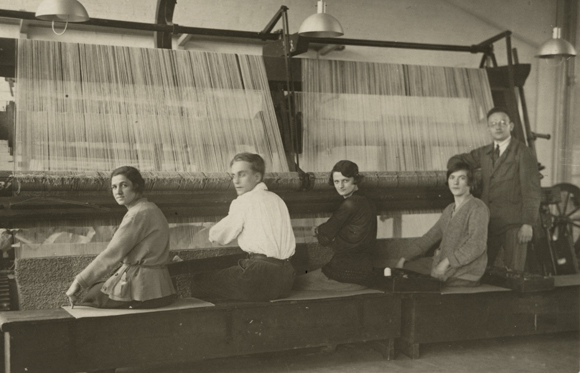
In 1919, Walter Gropius opened the Bauhaus’ doors with the declaration that the school would admit “any person of good repute, regardless of age or sex… [there are] no differences” he continued, “between the fairer sex and the stronger sex.”1 At a time when schools were segregated by gender and women were regularly denied access to academic and artistic tutelage, the allure of such a mandate was indelibly strong. Indeed, it was stronger than Gropius and his council of masters anticipated, and by the time the school opened its doors outright his founding announcement had attracted more female students than male.
As integrated foundation courses commenced, Stölzl and the other female Bauhäusler must have reveled in the freedom afforded to them in an institution that ostensibly found little value in labels of sex and gender. But the minutes from the masters’ meeting reveal that the male leaders of the Bauhaus were growing steadily more concerned with the volume of women filtering into the school. Gropius, in particular, was worried the presence of so many would give the institution an amateur affectation; infecting the atmosphere with something reminiscent of Arts & Crafts that Gropius – ever mindful of distancing himself from his predecessor – was keen to avoid.
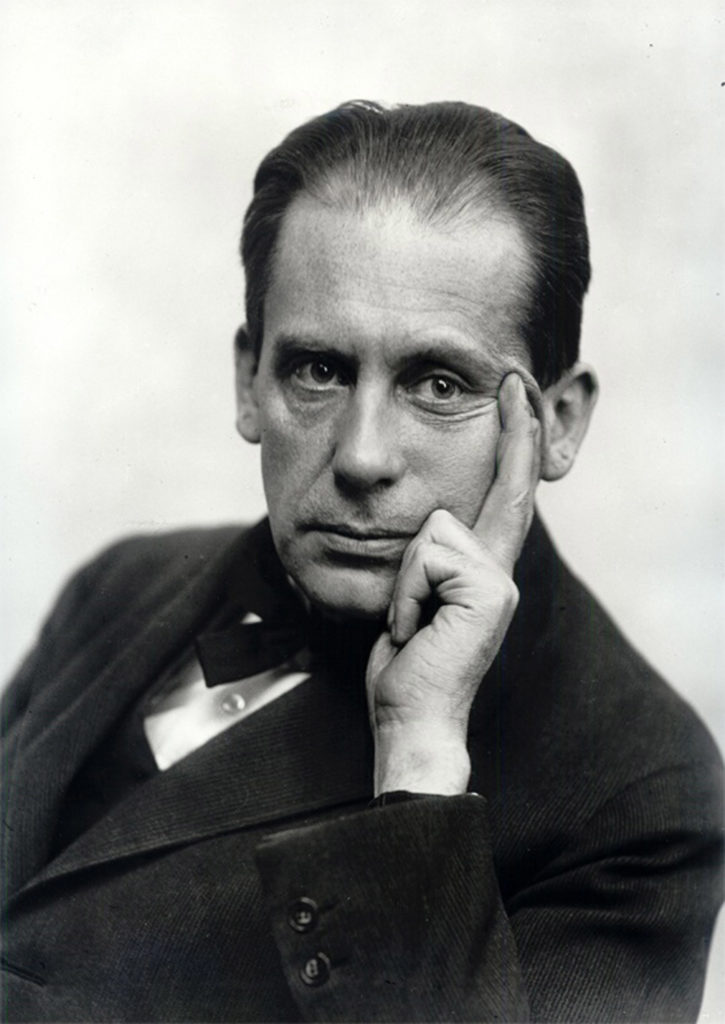















































More than this, he didn’t believe women were up to the academic rigors of the Bauhaus. According to Gropius, women simply weren’t capable of thinking beyond two dimensions and that made them a liability to the artistic direction of the school, focussed, as it was, on architecture.
He determined that, in order to preserve the craft of the Bauhaus, its women would be kept from the principal subjects of study and herded into a single, insignificant workshop where they could not dilute the school’s output. The selection of the weaving workshop was a reflection of the Arts & Crafts veneer it retained from its previous iteration in the Grand Ducal School, but was also instructive of the prevailing attitude that weaving was “women’s work”2; little more than a hobby that could be mastered with little effort or thought – as Oskar Schlemmer summed up: “Where there is wool, there is a woman who weaves if only to pass the time.”3
A major concern of the early Bauhaus was the differentiation of art and craft, and this distinction too was gendered. Gropius elevated the latter – associating it with architecture and sculpture, and, more pointedly, “male genius”4 – supposing the former required less skill and intellect. In short, art (a category to which weaving supposedly belonged) was a decorative, often feminine, practice.
This philosophical classification of the arts within the Bauhaus may have been why Georg Muche, the disinterested master of the weaving workshop – who vowed he would never “weave a single thread, tie a single knot, [or] make a single textile design”5 – refused to engage with the discipline. It was regarded as a manual, rather than intellectual, subject; subordinate to the practices of painting and architecture. In the estimation of Gropius and his masters, women weren’t capable of craft – they could only indulge in mere art.
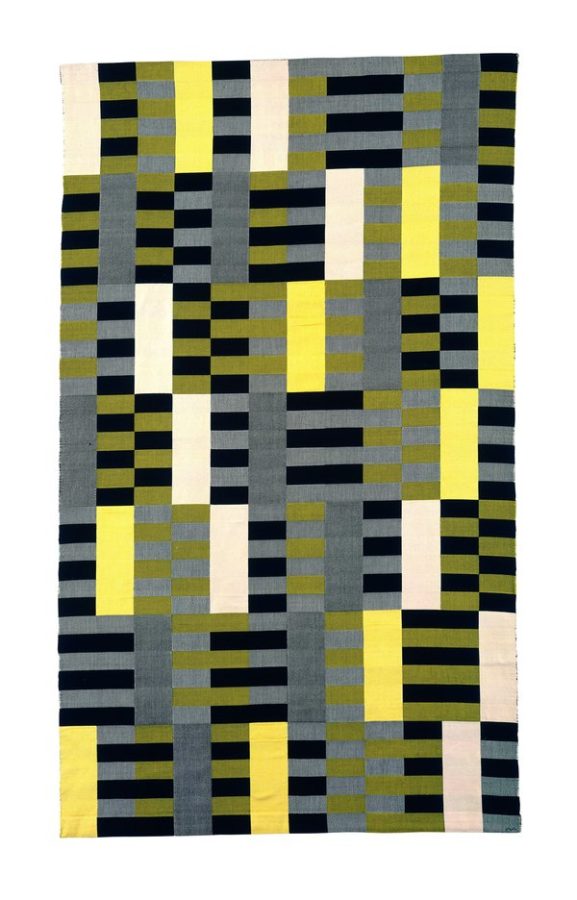















































At first, women were strongly urged to enter the workshop – though this urging was tantamount to a directive. Later, they were simply refused entry to any other course. The hope may have been that the women would be kept away from the important work of the Bauhaus. But the masters underestimated how much the weaving workshop would be defined by the women within it – and how much the school would come to rely on them financially. What none of those men counted on was Gunta Stölzl.
Stölzl was a Red Cross nurse during the First World War. A story related by her daughter, Monika Stadler, reports that when she became concerned about a doctor’s careless practice, so feared was she around the hospital, she had no trouble having him removed. “You see her posture?” Stadler notes on a photograph of her mother from the time. “That’s the nurse, as a careless surgeon, you had to watch out for.”6
When mountain climbing first became a pastime, a young Gunta Stölzl immediately took it up – a scar on her forehead testimony to an early fall that failed to discourage her at all. In short, she was adventurous, forthright, and indefatigable. When she was herded into the weaving workshop, she was appalled by its disorder and disrepair. And, despite the presence of two – albeit ineffective – tutors, she immediately took over as de facto leader of the department. Not officially appointed until 1922, she took to writing meister on her identification card in pen instead.
















































But it wasn’t just the strength of her personality that pulled the weaving workshop from the mire that Georg Muche had led it into. Stölzl had studied a range of subjects at Munich’s School of Applied Arts and had a lot to offer the women under her tutelage. In truth, Gropius’ attempts to keep the women from the Bauhaus’ “masculine arts”7 suited her and with the help of women like Marianna Brandt, Anni Albers, and Benitte Otte, she used that policy of segregation to create an environment of expression and experimentation free from male oversight.
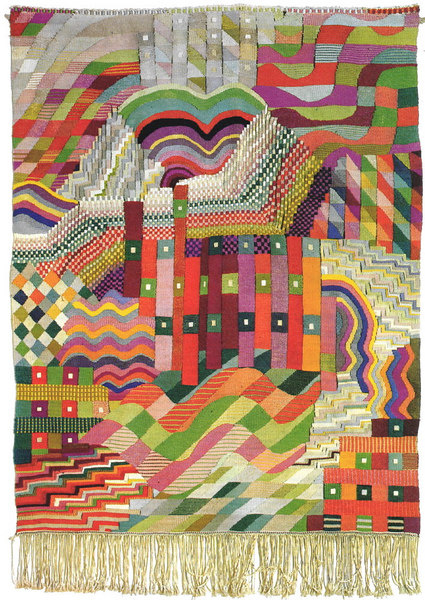















































Some have argued that this acceptance of the Bauhäusler’s division was the result of internalized sexism. Anja Baumhoff, in particular, suggests that “a precondition of her employment in the weaving workshop was her willingness to accept gender ideology.”8 However, others have looked at it as Gunta Stölzl cannily gaming the system. After all, the school was a practicing studio and Gropius spent the early years of the Bauhaus trying to run an architectural firm within its walls. Stölzl identified that this supposed women’s art could, in turn, attract women as clientele – in particular, “bourgeois female[s]… newly reinvested in the home.”9
In creating a wholly female space within the school, Stölzl was able to capitalize on this with remarkable results. In response to claims that Stölzl aided and abetted the masters, T’ai Smith suggests, “If she had internalized the sexism of the masters, it was not just in the organization of the Bauhaus women’s class but in her view of, and appeal to, the workshop’s female buyers.”10 In retrospect, it appears that Stölzl and her students simply engaged in especially good marketing.
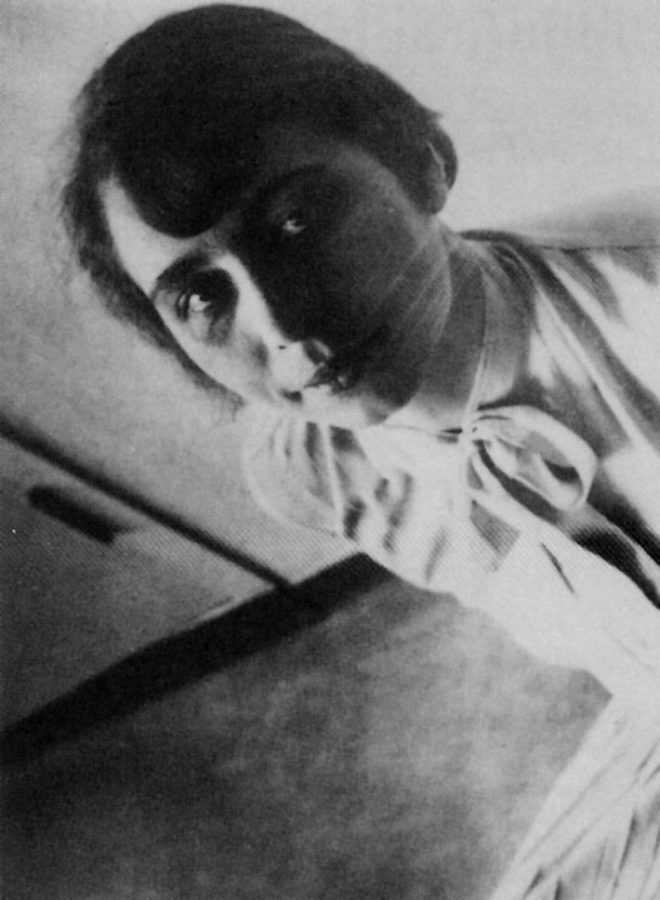















































This business acumen made the workshop the most consistently lucrative at the Bauhaus. Throughout its early years – but especially between 1923 and 1926 – the school struggled financially and it always seemed to be the weavers who kept it afloat. In 1922, they sold more products than any other workshop at an exhibition in Zurich. Following an exhibition in 1923, it was noted that the weavers were “particularly quick off the mark in finding representatives to handle its retailing”11 after an impressive number of commissions. Gropius may have perceived weaving as the nadir of the Bauhaus, but Stölzl turned it into the financial backbone of the school.
Despite how vital the workshop became to the Bauhaus’ survival, Stölzl wasn’t officially made a master until 1927. But by 1930, the intense nationalism that had been broiling throughout Germany for more than a decade erupted. In the midst of immense political pressure, and after finding a swastika painted on her door, Stölzl resigned. The lack of support from then-director, Mies van der Rohe, in the face of the intense anti-Semitism engulfing the school infuriated her students. But much as political pressure would lead to the closure of the school three years later, the rising civil fervor made her position untenable.
However, like many of the women of the Bauhaus, Stölzl’s legacy expanded dramatically once she left the school. Her pedagogical essays, along with the writings of Anni Albers, helped define a theory of weaving that is still practiced today. She was the first woman to be exhibited for textiles at the MoMA. And she has been recognized by the world over as a pioneer of textile design.
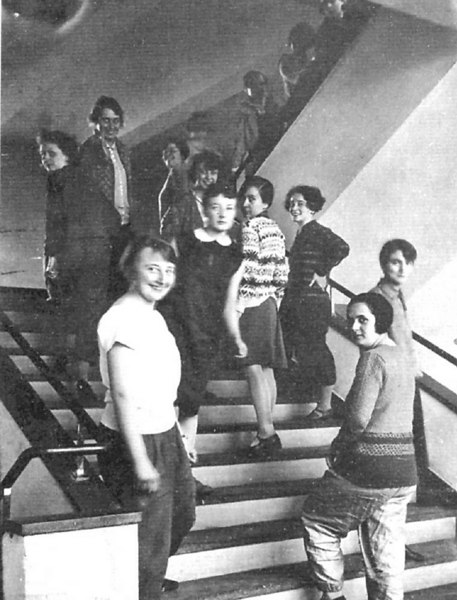















































Gropius’ Bauhaus made wonderful things and no matter how hard he tried to disenfranchise them much of that is down to the female Bauhäusler. But compared to Stölzl, the work of Gropius – so firmly stuck in the moment – is somewhat absent from our collective consciousness. Where Walter Gropius is synonymous with the institution he founded, the women of the Bauhaus managed to transcend the school’s anonymity to flourish under their own names. Despite the obstacles placed before them by supposedly great men, the women left behind a catalog of innovative and exciting work that is still in circulation today; the patterns and materials developed both inside and beyond the walls of the Bauhaus still permeate the modern market and their work still resonates with the contemporary study of weaving.
Over 100 years on from the opening of the Bauhaus, Gropius has become even more conflated with the school he built. As his anonymity grows, and as we examine further the contradictions on whose foundations the Bauhaus was erected, it is fitting that it is the school’s women that are now its most visible and influential figures. And as the immediacy of Walter Gropius fades, it is the very tangible legacy of the women he sought to stifle that grows in its place.
Walter Gropius (1919). Bauhaus Manifesto and Program. Weimar: The administration of the Staatliche Bauhaus in Weimar. Accessed 7 Nov. 2018.
T’ai Lin Smith (2014). Bauhaus weaving theory. 1st ed. Minneapolis: University of Minnesota Press.
Oskar Schlemmer, cited in: Sigrid Weltge-Wortmann, Bauhaus Textiles: Women Artists and the Weaving Workshop, 1998, p. 41.
Anja Baumhoff (2001). The Gendered World of the Bauhaus: The Politics of Power at the Weimar Republic’s Premier Art Institute, 1919-1932. Bern: Peter Lang Pub Inc.
George Muche, cited in: Sigrid Weltge-Wortmann, op. cit., 1998, p. 59.
Monika Stadler (2012). Bauhaus: Art as Life – Gunta Stölzl: A Daughter’s Perspective. Presentation via YouTube, posted by Barbican Centre on 21 Jun 2012. Accessed 1 Oct. 2018.
Walter Gropius at the Bauhaus exhibition in 1923, cited in: Matthew Wilson Smith. The Total Work of Art: From Bayreuth to Cyberspace, New York, 2007.
Anja Baumhoff (2001). The Gendered World of the Bauhaus: The Politics of Power at the Weimar Republic’s Premier Art Institute.
T’ai Lin Smith (2014). Bauhaus weaving theory.
T’ai Lin Smith (2014). Bauhaus weaving theory.
Anna Rowland (1988). Business Management at the Weimar Bauhaus. Journal of Design History, 1(3 and 4), pp. 153-175.
DailyArt Magazine needs your support. Every contribution, however big or small, is very valuable for our future. Thanks to it, we will be able to sustain and grow the Magazine. Thank you for your help!